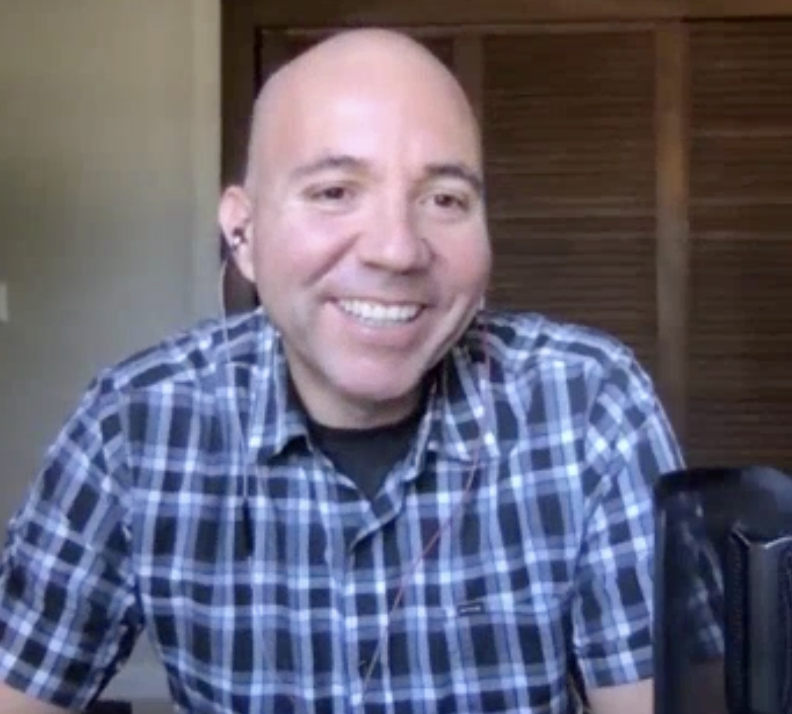When I first started managing social media profiles for brands 15 years ago, we spent a lot of time working to increase our follower/fan counts. It’s what we reported on monthly and what we told leadership was important.
After all, fan count was a measurement of potential reach initially — and brands spent a lot of money to increase that reach count because more social media followers could mean more web traffic, music plays, email subscribers, leads and sales. But, as you know, that fan count metric started to become less important as social algorithms evolved and follower counts didn’t provide the reach and engagement it once did.
Fast forward to today and follower count is mainly just a vanity metric that doesn’t mean much from a social business perspective. It doesn’t guarantee reach or engagement — and it isn’t even a sign that your brand has a legit community. There are too many fake accounts, bots and people who randomly (or mistakenly) followed your page a while ago, but haven’t interacted with your brand in years.
So here are four ways to think about ways to use social metrics for business:
1. Ignore social vanity metrics (e.g. follower counts) and focus on the engagement metrics that impact your business.
There are many social data points that are helpful to analyze in order to improve social campaigns and content strategies, but not all are useful to driving social business results.
It’s important to step outside o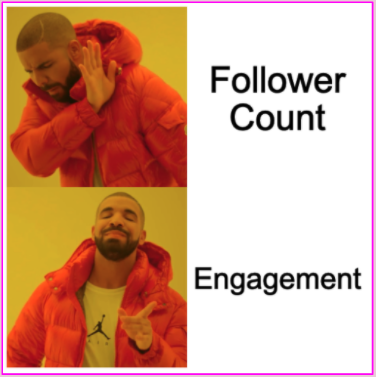 ur social media roles and think about the data sets that are important and actionable for business leaders.
ur social media roles and think about the data sets that are important and actionable for business leaders.
Here are some helpful metrics that you should consider tracking to for business results:
- Web traffic from social channels
- Revenue and sales
- Leads & email subscribers
- Reputation, brand sentiment, community growth
- Customer care issues & complaints
- Competitor analysis and industry issues trending
And, remember, the social data that you have access to evolves so make sure to keep an eye on new data points that can help you and your leaders in the future. For example, video watch times, peak live viewer counts, video CTR and completion rates can inform your future video social strategy on each platform.
2. Target audience engagement levels (and time spent) on social channels should impact your social campaigns and content strategy.
The problem with studying our own social media metrics is that it can lead us to the wrong conclusions if we aren’t also looking externally. We need to constantly keep aware of where our target audiences and communities spend time online.
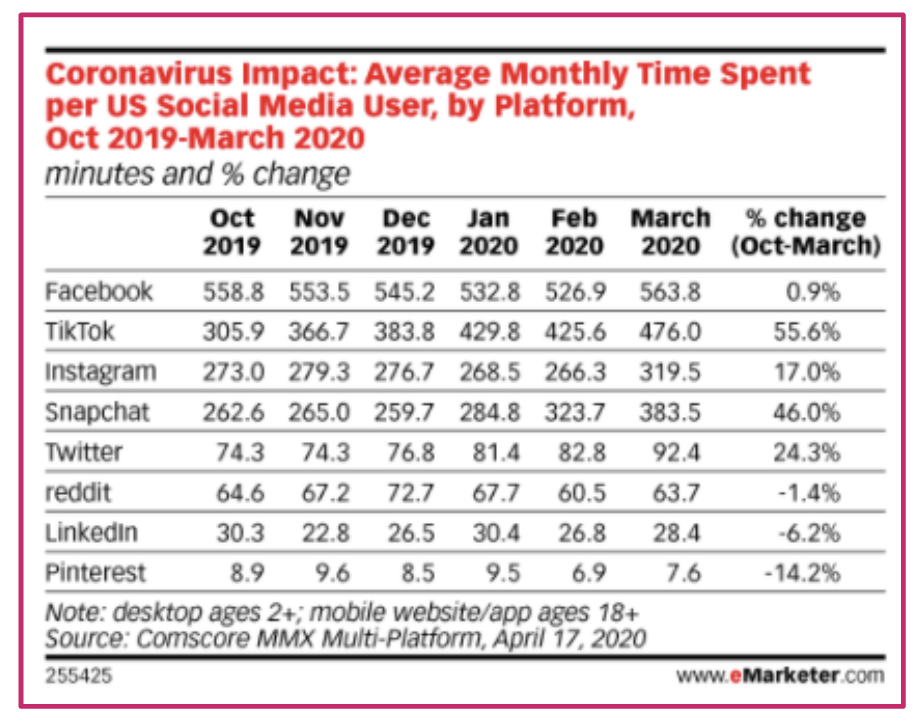 We’ve been seeing some interesting shifts in social networking behavior during the COVID-19 pandemic with more people spending time on video social networks (e.g. YouTube, TikTok, Instagram Stories, Twitch) and of course messaging apps like Facebook Messenger and WhatsApp.
We’ve been seeing some interesting shifts in social networking behavior during the COVID-19 pandemic with more people spending time on video social networks (e.g. YouTube, TikTok, Instagram Stories, Twitch) and of course messaging apps like Facebook Messenger and WhatsApp.
If we’re not paying attention to objective, third-party research on where people spend time online, we’re missing out on key information to help us decide on social channels to spend time on and types of content to create. It’s also important to remember how different generations are using each of these channels for content creation, news reading, messaging others, storytelling, etc.
Knowing that TikTok surpassed instagram in time-spent by people should signal to brands about the importance of building community and relevant content for their target audiences there. If you’re only paying attention to your own data, you’ll miss out on opportunities to create new social profiles and communities.
3. Industry benchmarks on brand engagement rates can help you set meaningful goals and expectations for each social channel.
Aside from tracking social metrics that matter, we also need to be aware of how our metrics compare to our competition — and how our metrics compare historically.
How do we know how well our social strategy is performing? One way to answer that question is to analyze how our social metrics compares in the past (last month, last year) and also how our data compares to others in our industry.
Rival IQ provides awesome benchmarks to show brand engagement rate by industry across core social media channels. You’ll quickly get a sense of post frequency and social engagement rates. This data gives you a sense on median rates to compare to.
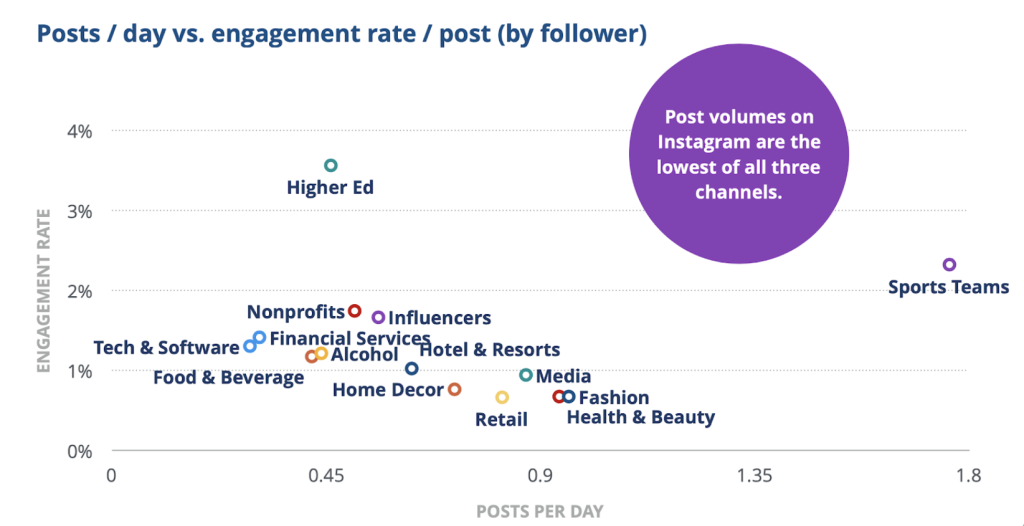
These data points provide realistic expectations since engagement rates and other metrics will vary based on follower counts, social channel and whether your brand has an established community there.
Industry benchmarks may not be realistic for your brand if you have a new channel (or don’t have an established community) so keep that in mind when setting goals. These benchmarks also don’t give insights into paid vs. organic content or how engagement rates vary based on follower counts. After all, engagement rates tend to dip based on the more followers you have so keep that in mind.
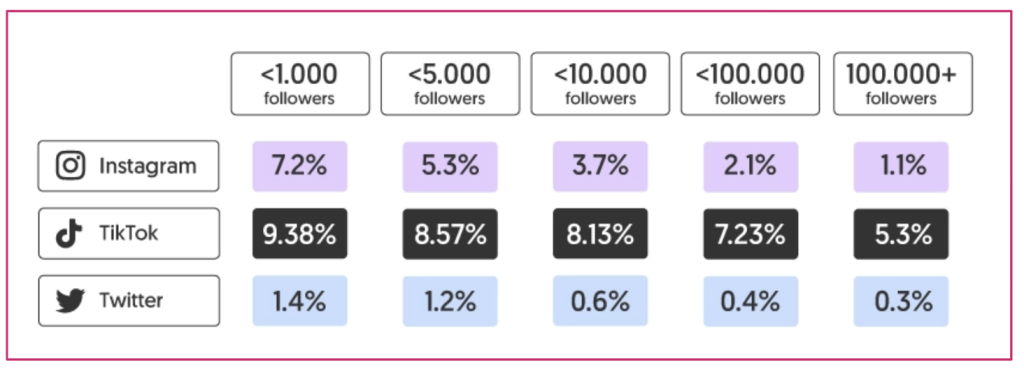
4. Experiment with new social platforms, content types and post times to figure out new ways to engage your target audiences.
 The trouble with focusing on best practices and relying on your own social analytics to drive strategy is that it might prevent you from testing new types of content or exploring new social channels. It’s easier to wait for the case study — or wait for others in your industry to test content or channels first — before taking action on a new channel or creating a new type of content.
The trouble with focusing on best practices and relying on your own social analytics to drive strategy is that it might prevent you from testing new types of content or exploring new social channels. It’s easier to wait for the case study — or wait for others in your industry to test content or channels first — before taking action on a new channel or creating a new type of content.
Sadly, waiting for the case study will mean lost time learning: how the channel operates, who the influencers are, how to build community, and ways to properly engage with others as a brand. It also means that other brands (and competitors) will have a significant head start on building a thriving community before you. And, nobody wants to get those questions from leadership on why your competitors have accounts on those channels and you haven’t launched one yet.
Look, building a community on a new channel takes time, consistent posting, engaging with others, and other time-consuming activities. i totally understand why many people prefer to wait until there are proven case studies to refer to before making the time investment into a new channel — or new type of content (e.g. live video, daily stories). You’ll need to decide how to navigate those periods, but I highly recommend making time to allow your team to explore new channels and test new content ideas.
Let me know what you think.

